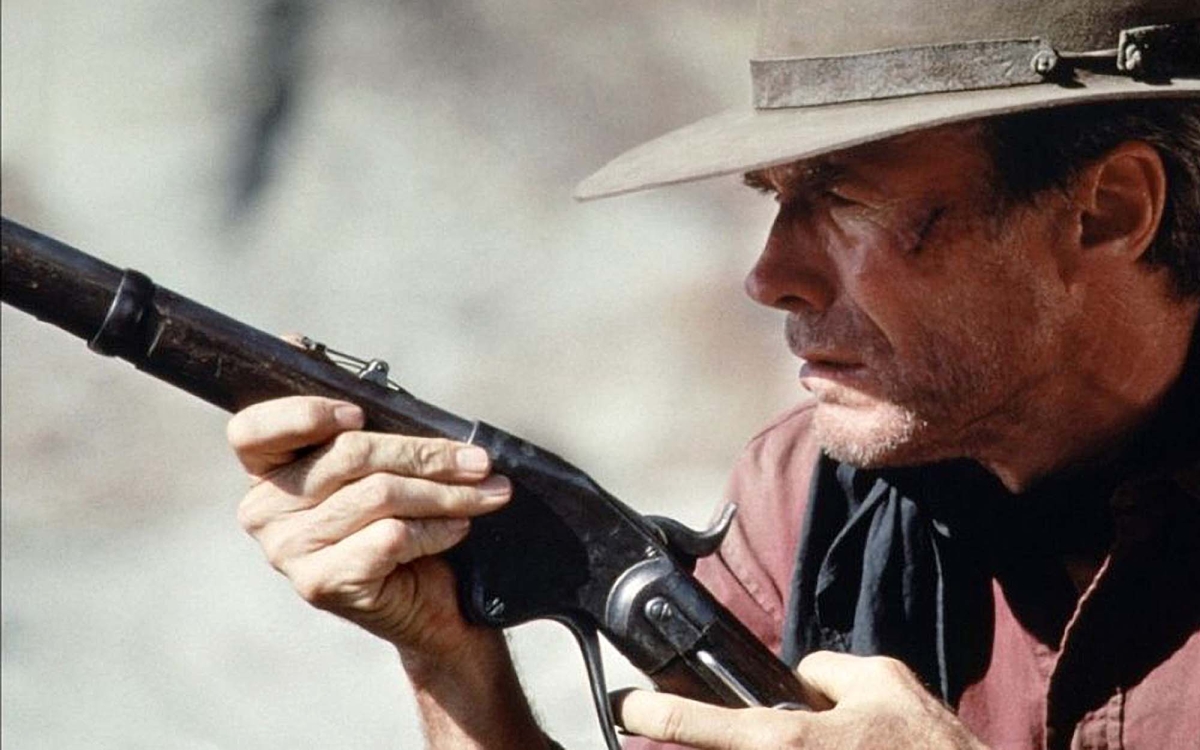“Unforgiven” 30 years: the Spencer 1860 carbine
Let's talk about another important firearm that Clint Eastwood included in his western film "Unforgiven": the Spencer 1860 repeating rifle, an absolute protagonist of the American Civil War and the years that followed, with the Indian Wars and the definitive conquest of the American frontier
Movie / 30 years of “Unforgiven" (1992)
From a cinematographic point of view, in Clint Eastwood's film "Unforgiven" (1992), giving a Spencer carbine to the co-protagonist Ned Logan (Morgan Freeman) - a friend of William Munny (Clint Eastwood) - represents a very plausible historical choice within the story, as a weapon of an elderly retired outlaw, and it proves very effective in the film. One particularly realistic aspect is how Ned Logan doesn't try to get a more modern weapon, preferring to use what he had acquired experience and familiarity with, and which he had come to trust.
For those who have already seen the movies (spoiler alert for those who haven't seen it yet) let's say right away that in the logic of the story it is precisely because of the close link between the Spencer carbine and Ned Logan that, in the final showdown, William Munny uses this gun to kill Sheriff Little Bill Daggett (Gene Hackman), just to avenge his friend Ned, using "his" weapon (Clint Eastwood is a perfectionist, and we appreciate these details).
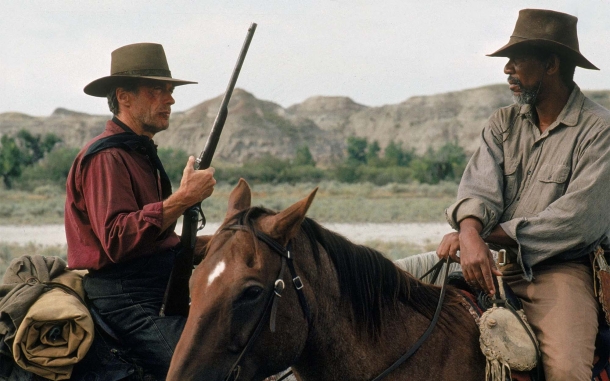
The film is set in 1881, or shortly after: the gunslinger "Bob the English" (Richard Harris) tells us so, referring to the recent murder of the American President James Garfield, which took place on July 2, 1881. In those years, exactly twenty years after its issue to the U.S. armed forces, the 1860 model Spencer cavalry carbine was still one of the most widespread weapons in the homes of many pioneers, who had been serving in the army, or had been disbanded soldiers: as probably was Ned Logan, who in the movie, having a small farm in Kansas and a stormy past with his friend William Munny, had probably experienced the difficult period that hit the "sunflower state" after the Civil War.
Having made this dutiful historical introduction to give a context to the firearm within the movie's narrative, let's now see the weapon in question: the Spencer cavalry carbine model 1860.

Spencer 1860 cavalry carbine
Many believe that the Henry was the first metal cartridge repeating breech-loading rifle, but in reality the dates of the patents of these two weapons, filed the same year, speak for themselves: Spencer, March 1860; Henry, October 1860.
Although the Henry undoubtedly was the first breech-loading rifle to 1) eject the fired case, 2) chamber a new cartridge and 3) cock the hammer with a single action of the loading lever, it was however neither the first, nor the only metal-cartridge lever action rifle used during the American Civil War, nor it was the first repeating, breech-loading, metallic cartridge firearm issued to the US Army.
This primacy goes to the Spencer repeating rifle. The first obstacle to overcome was indeed that of the ammunition: a cartridge powerful enough to compete with the .58 caliber Minié muzzle-loading Springfield rifles used by the Army, but short enough to be employed in the relatively complex mechanism of a breech-loading repeating rifle. Spencer therefore created a rimfire cartridge, the .56-56 Spencer, with ballistic performances that exceeded those of the Springfield.
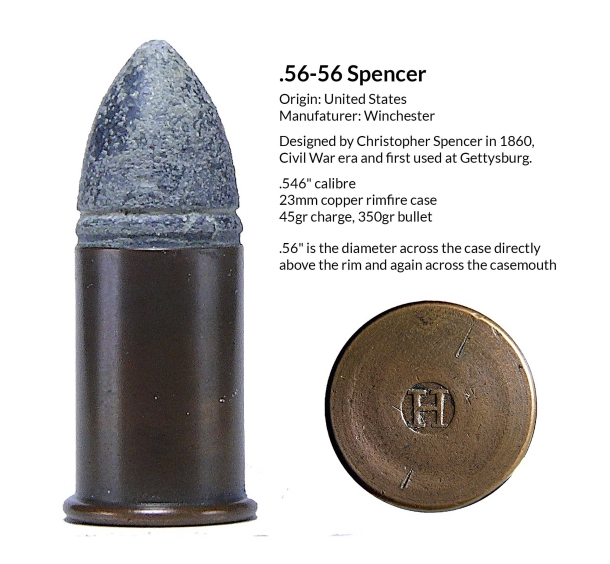
Unlike the usual way of naming cartridges in the 19th century, with two numbers indicating caliber and weight of the powder, the two numbers of the .56-56 Spencer indicate the diameter of the case above the rim and at the collar. Other Spencer cartridges, such as the .56-52, .56-50 and .56-46 were tapered and fitted with smaller caliber bullets.
The large caliber of this rimfire cartridge allowed it to pack a lot of powder in a short case. The cartridge fired a 350-grain bullet at about 370 m/s, for a muzzle energy of 1,525 joules, against the contemporary 500-grain .58 caliber Minie bullet, propelled at 289 m/s, for an energy of about 1,355 joule,
So, let's not be fooled by the wording "rimfire": the .56-56 Spencer was a powerful cartridge and more than suitable for military use.
Photo: original .56-56 Spencer cartridge manufactured by Winchester
When the Spencer was introduced in 1860, military rifles were essentially still single-shot muzzle-loading or, rarely, breech-loading weapons which employed paper cartridges (as in the case of the 1859 Sharps).
Christopher Miner Spencer invented a manual repeating mechanism that allowed a rifle to feed cartridges from a tubular magazine inserted into the butt of the stock, via a rotating bolt that picked up and chambered the cartridge, then locking the breech.
Although it required three separate actions to reload it, with a minimum of practice the Spencer was a rifle capable of a good rate of fire, averaging 20 rounds per minute, versus the Springfield's 2-3. The design was good, robust and, above all, very reliable.
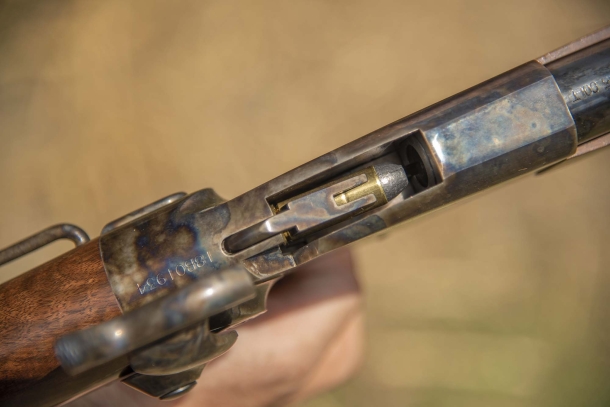
Once the lever is pulled down, the bolt rotates rearward and a new cartridge is ready to be chambered, when the bolt returns to the closed position
The magazine is located in the stock, with 7 cartridges arranged linearly in a metal tube, which also contains the power spring. Thanks to the rimfire design, the bullet could have a point without dangers of chain ignition due to recoil effects, as in the tubular magazine design of subsequent centerfire rifles.
To load the rifle, first of all it is necessary to extract the magazine tube from the stock, insert 7 cartridges into the stock and reinsert the tube with the spring in its place. This causes the spring to be compressed, allowing it to feed each cartridge into the mechanism each time the lever is actuated.
The firing sequence is completed by:
- Lowering and then pulling back the loading lever (which also acts as a trigger guard and is hinged to the receiver), to open the bolt, take a new cartridge from the magazine and push it into the barrel, while the bolt returns to the closed position.
- Cocking the hammer at half mount (the safety mount).
- Then fully cocking the hammer only when ready to fire.
The sequence is repeated seven times, i.e. the number of cartridges contained in the magazine inside the stock. For this reason, precisely because of its seven shots, it was in fact the Spencer, and not the Henry, that was defined as "That damned Yankee rifle that you load on Sunday and shoot all week".
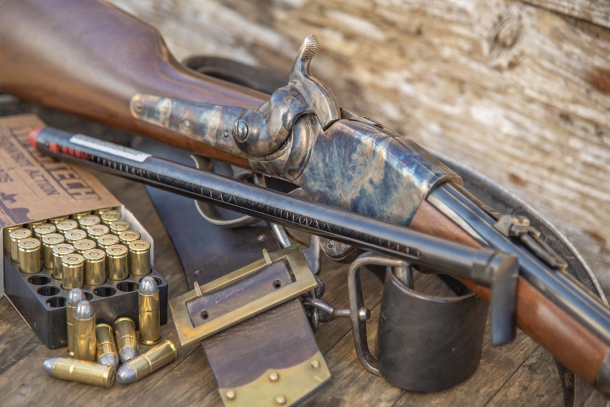
The metal tube of the magazine, containing the spring that pushes the cartridges into the stock
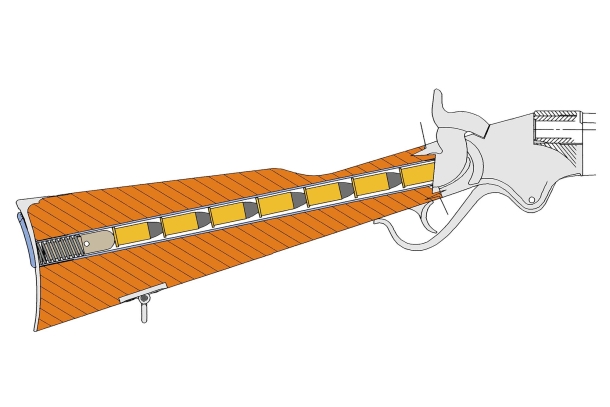
Sectional view of the stock, with the 7 cartridges in the metal tube, with the mainspring
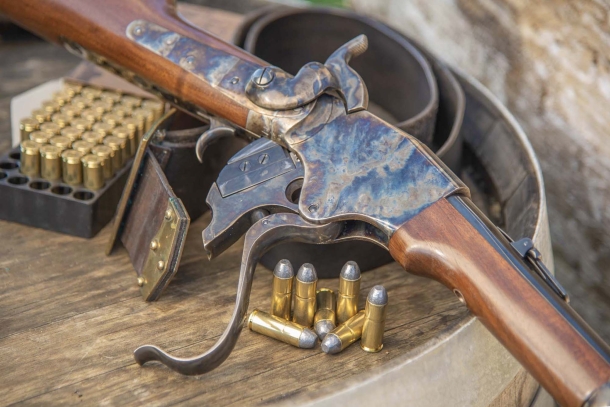
Pulling down the lever (the trigger guard) opens the rotating bolt
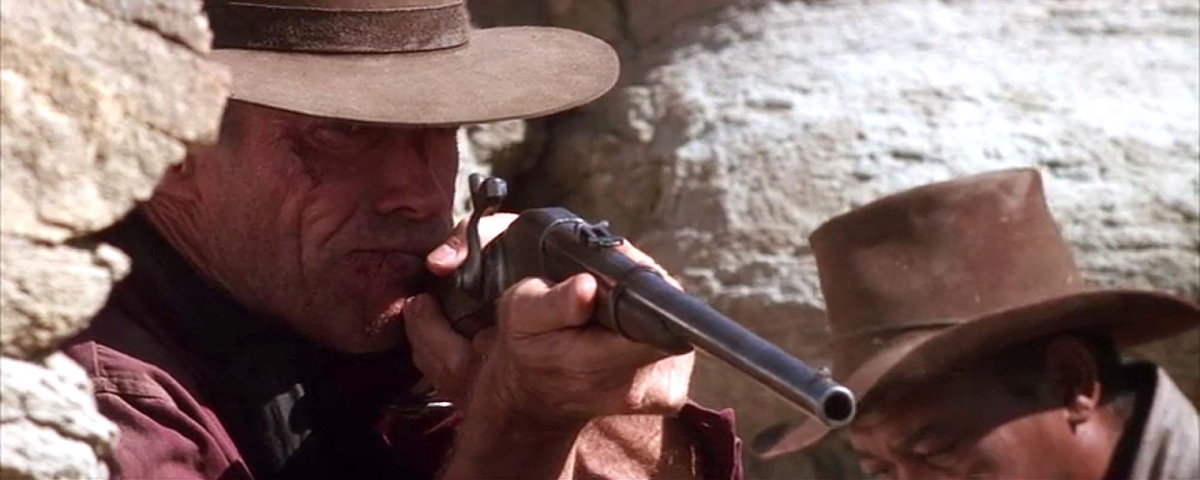

Movie: "Unforgiven" (Clint Eastwood, 1992)
The adoption of the Spencer rifle by the Ordnance Department was not immediate, due to a certain opposition from the military bureaucracy of the time, still clinging to single shot firearms (and, to be honest, they were not always in the wrong).
The Spencer was in fact adopted only at the end of 1863 and was enormously successful: between 1860 and 1869 more than 200,000 were produced, most of which used by cavalry units and civilians in the West frontier regions, with some also bought by the French and used in the Franco-Prussian War.
The near-simultaneous arrival of the Winchester 1866 though, with its simpler, faster, smoother loading system (and cheaper manufacturing costs), rendered the Spencer obsolete, and the Spencer Rifle Manufacturing Co. went out of business in 1869.
Christopher Miner Spencer, however, did not stop: his creative mind continued to work for another 40 years on many other projects in the field of industrial machines, earning a reputation as one of the most important American designers of all time.
The Spencer is still popular, and Chiappa Firearms today produces a faithful reproduction, available in the popular and timeless .45 Colt, in .44-40 Winchester and also in the .56-50 centerfire caliber, very popular in the USA for its "proximity" to the original rimffire ammunition but reloadable, thanks to the availability of Starline centerfire brass cases.

With the exception of the ammunition, which is now centerfire, the modern Spencer replica from Chiappa Firearms faithfully follows the aesthetics and mechanics of the original gun



